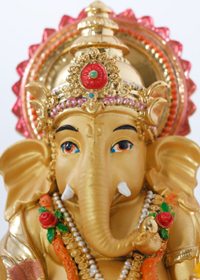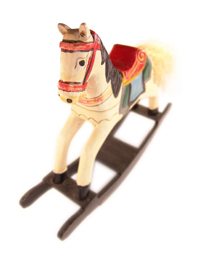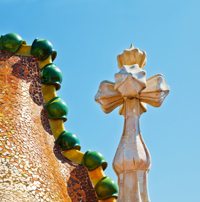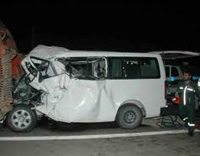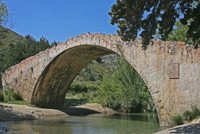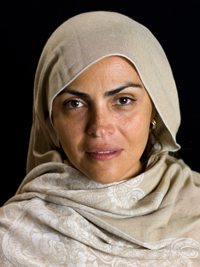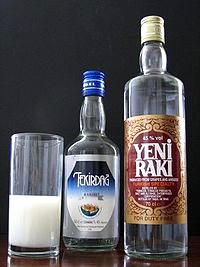How Derived: Memories in Childhood
Researchers: R. Bayer and Ian Stevenson, MD
From: Cases of the Reincarnation Type, Volume III, Twelve Cases in Lebanon and Turkey, by Ian Stevenson, MD
Article by Walter Semkiw, MD
The Murder of Sehide Suzulmus
 This case involves a woman, Sehide Suzulmus, who was murdered along with her husband, Abit, on January 31, 1957. It is a dramatic case, as a couple that was murdered together appear to have reincarnated in close proximity of one another. They were then able to meet and embrace one another as children. These cases demonstrate how souls can plan incarnations to ensure that those who loved one another in prior incarnations can be reunited in subsequent lifetimes through reincarnation.
This case involves a woman, Sehide Suzulmus, who was murdered along with her husband, Abit, on January 31, 1957. It is a dramatic case, as a couple that was murdered together appear to have reincarnated in close proximity of one another. They were then able to meet and embrace one another as children. These cases demonstrate how souls can plan incarnations to ensure that those who loved one another in prior incarnations can be reunited in subsequent lifetimes through reincarnation.
Abit Suzulmus, Sehide’s husband, was murdered after an employee at his farm told him that an animal was lame. It was nighttime and in the dark, Abit went with the employee to the stable to look at the animal. When Abit leaned over to examine the animal, someone struck Abit over the head with a heavy metal bar or hammer, which killed him.
When Abit didn’t return to the house, Sehide, his wife, went to the stable to see what was delaying him. She too was killed by a blow to the head. Similarly, their two children, Zihni and Ismet, were also killed that night.
Two men were later hanged for these crimes, whose names were Ramazan and Mustafa. For a complete description of the lives of Abit and Sehide Suzulmus, please refer to the case of Abit Suzulmus | Ismail Altinkilic.
The Reincarnation of Sehide Suzulmus
Cevriye Bayri was born on October 1, 1958, in Adana, Turkey, just shy of two years after the death of Sehide Suzulmus. Her father was Kerim Bayri, who was a tinsmith, and her mother was named Cemile.
Soul Plan: An Announcing Dream
After Cevriye was born, Kerim, her father, had a dream in which Abit Suzulmus appeared to him. Recall that Abit is the one who was murdered along with his wife, Sehide. As the murder of Abit was well publicized in Adana, Kerim knew who Abit was. In the dream, Abit told Kerim that he was sending him a gift that he should look after. When Kerim asked what the gift was, Abit replied:
“The one who has come with you.” (1)
This dream occurred when Abit Suzulmus had already reincarnated as Ismail Altinkilic, who was about a year old at the time Kerim had his dream. As such, this dream indicates that the soul can function independently of its physical incarnations, which is further discussed in the section entitled Soul Evolution.
 Past Life Memories: Cevriye Remembers her Murder and Demonstrates a Phobia of the Dark from a Past Lifetime
Past Life Memories: Cevriye Remembers her Murder and Demonstrates a Phobia of the Dark from a Past Lifetime
As soon as Cevriye could speak, she tried to communicate something that was unclear, but as her verbal skills improved, the words she was trying to say evolved into the following statement:
“Ramazan killed.” (2)
As a small child, Cevriye had a pronounced phobia of the dark. This phobia persisted at least to when she was 15 years old. As one example, when the electricity at their home when out, Cevriye began crying and ran to her mother, exclaiming:
“Ramazan is going to kill me.” (3)
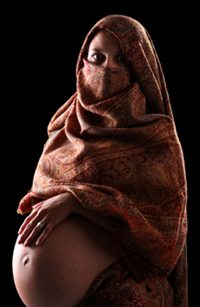 Between the ages of two and three, she described how she was murdered in a prior incarnation. She said that she had gone in search of her husband, who had been killed by Ramazan. She said that she then too was killed by Ramazan by a hammer. Cevriye said that she had been killed in the dark and that she was pregnant at the time of her death.
Between the ages of two and three, she described how she was murdered in a prior incarnation. She said that she had gone in search of her husband, who had been killed by Ramazan. She said that she then too was killed by Ramazan by a hammer. Cevriye said that she had been killed in the dark and that she was pregnant at the time of her death.
Cevriye told her parents that her name had been Sehide and that her husband’s name was Abit Suzulmus.
All of these details were historically correct, as recounted in the case of Abit Suzulmus | Ismail Altinkilic. In addition, Cevriye said that as Sehide, she gave birth to her child after her death. Indeed, Sehide Suzulmus was going into labor at the time of her murder, but it was not publicly known that she had delivered after her death. As part of the investigation of the murders, Sehide’s body had been exhumed from her tomb and it was found that indeed, her unborn baby had been partially extruded from Sehide’s body.
A skeptic could claim that Cevriye’s knowledge of the murder of Sehide could have come from coaching by her father, Kerim, as the murders were well publicized and Kerim did have the announcing dream that involved Abit. The recognitions made by Cevriye that are provided below, though, could not have involved coaching, as they were spontaneous events.
Past Life Memories: Cevriye’s Recognition of Past Life Relatives and Friends
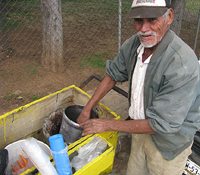 At two years of age, Cevriye recognized an ice cream seller that she had known in her lifetime as Sehide. She told him that on the day that she, as Sehide, had been murdered, she had given the ice cream seller, who was poor, some food to eat. The ice cream seller confirmed that Sehide did give him food on the same day that she was murdered.
At two years of age, Cevriye recognized an ice cream seller that she had known in her lifetime as Sehide. She told him that on the day that she, as Sehide, had been murdered, she had given the ice cream seller, who was poor, some food to eat. The ice cream seller confirmed that Sehide did give him food on the same day that she was murdered.
When Cevriye was less than three years of age, she was introduced to Hatice, the second wife of Abit Suzulmus. Cevriye was told that this person was a friend or partner in her past incarnation, without being given Hatice’s name. Cerviye spontaneously identified Hatice by name.
Cevriye recognized Fehime, her sister from her past incarnation as Sehide Suzulmus. In addition, Cevriye was able to identify Gulserne, who was Sehide’s surviving daughter. When they met, Cevriye named Sehide’s children and when Gulserne asked who she was, Cevriye responded, “Gulserne.” (4)
Cevriye was taken to the Suzulmus home by her mother, Cemile, and was asked if she could identify a young woman who was referred to as “this girl.” Cevriye was given no other clues, but she spontaneously identified the girl as Hikmet, another surviving daughter of Abit and Sehide Suzulmus. Cevriye then ran to Hikmet, hugged her and then related to her how she had been killed as Sehide.
When Cevriye was introduced to Ziki, the surviving son of Abit and Sehide, she embraced him and started to cry. She then stated, “This is my son.” Cevriye asked Ziki if Hattice, the second wife of Abit, was taking good care of him. (5)
Cemile, Ceviye’s mother, obtained a photo from the Suzulmus family of Abit and Sehide. When Ceviye was between two and three years old, Cemile showed the photo to Ceviye and asked who the people were in the picture. Ceviye replied:n“This is my photograph and my husband.” (6)
When Cevriye was five years of age and she and her mother were passing a restaurant, Cevriye recognized her past life friend, Gullu, inside the restaurant. Her mother, Cemile, did not know Gullu. Still, they went inside the restaurant and Cevriye correctly identified the woman as Gullu. Gullu was about 70 years old at the time and she denied any familiarity with Cevriye or her family. As such, this represents an accurate past life memory.
 Cevriye then asked Gullu, “What happened to Semiha? I was going to get her married to Ramazan. What a way to repay me!” (7)
Cevriye then asked Gullu, “What happened to Semiha? I was going to get her married to Ramazan. What a way to repay me!” (7)
Semiha Akdi was a girl employed by Abit and Sehide. Sehide wanted Semiha to marry their other employee Ramazan, but Ramazan ruined this plan by murdering Abit and Sehide.
Nadir Mirel was a friend of Sehide Suzulmus. When she heard of Cevriye’s memories of being Sehide, she visited the young girl with two friends. As a test, Nadir asked Cevriye:
“Who was your tailor?” (8)
Cevriye’s mother, Cemile, did not know the answer to this question, yet Cevriye pointed to one of the other women who came with Nadir, whose name was Nadir Midel. While pointing at Nadir, Cevriye stated, “There is my tailor.” (9) Cevriye was correct; Nadir was the tailor of Sehide Suzulmus.
Past Life Emotions: Cevriye’s Attachment to Sehide, her Past Life Name
Cevriye had an attachment to the name, Sehide. She asked her mother many times to change her name to Sehide. This phenomenon, of a person wanting to change their name to that of a past life identity, also occurred in the case of Abit Suzulmus | Ismail Altinkilic, as well as the case of Francesco Foscari | Wayne Peterson.
Past Life Love: Cevriye | Sehide and Abit | Ismail are Reunited through Reincarnation
 When Cevriye’s memories of being Sehide in a past lifetime were conveyed to the family of Ismail Altinkilic, both families wished to see what would happen if Cevriye and Ismail were brought together. Ismail had memories since childhood of being Abit Suzulmus, the husband of Sehide, who was murdered with her. A meeting between Cevriye and Ismail was arranged when Cevriye was four years of age and Ismail was about five.
When Cevriye’s memories of being Sehide in a past lifetime were conveyed to the family of Ismail Altinkilic, both families wished to see what would happen if Cevriye and Ismail were brought together. Ismail had memories since childhood of being Abit Suzulmus, the husband of Sehide, who was murdered with her. A meeting between Cevriye and Ismail was arranged when Cevriye was four years of age and Ismail was about five.
According to Ismail’s father, when Cevriye and Ismail first met, they ran to each other, hugged and kissed. Cevirye’s mother also related that Ismail hugged Cevirye.
Cevirye’s account of the meeting, as related to Ian Stevenson, was that Ismail held and caressed her hand, that they exchanged gifts and that they then related to each other the memories of how they were murdered.
Ismail asked Cevirye why she did not come to his aid when he cried out for help at the time of his murder. Cevirye posed the same question to Ismail. Ismail replied that he was “near his ox.” (10)
Up until five or six years of age, Cevirye kept referring to Abit Suzulmus as “my husband.” Ian Stevenson noted that she spoke in the present tense, as if Abit was still her husband in contemporary times. (11)
Ismail consistently stated that he wanted to marry Cevirye, at least through his last meeting with Ian Stevenson, which occurred in 1973. At the time of this meeting with Stevenson, Ismail was 16 year of age when he reported his continuing love for Cevirye.
Past Life Emotions, Past Life Love Story & Past Life Children
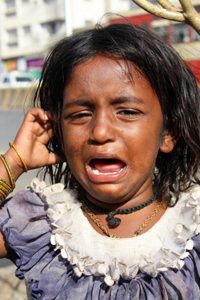 When she was between one and one and a half years old, her father, Kerim, said that Cevirye made the following statement:
When she was between one and one and a half years old, her father, Kerim, said that Cevirye made the following statement:
“Who knows whether my children are hungry?” (12)
Cevirye’s brother said that when Cevirye was young, she often asked to be taken to where Sehide’s children were staying. Eventually, Cevirye was taken to the home of Hatice Suzulmus, the first and surviving wife of Abit Suzulmus. Hatice was raising the surviving children of Abit and Sehide Suzulmus.
When Cevirye asked to see Zeki, a son of Abit and Sehide, Hatice was uncooperative. Cevirye was persistent and found Zeki sleeping upstairs, where she caressed him lovingly.
Cevirye continued to show attachment to the children of Abit and Sehide at least until she was 14 years of age. When Ziki, her son from her past incarnation, was married, Cevirye and was very upset that she was not invited.
Cevirye continued to visit Ziki and Hikmet, the surviving children of Abit and Sehide, through 1973, when Cevirye was 15 years of age.
Similarly, when Ismail was young, he was very concerned with Abit’s children and wished to take care of them. Ismail insisted that his father take food to the children of Abit and Sehide. These episodes are detailed in the case of Abit Suzulmus | Ismail Altinkilic.
Ian Stevenson last met with Cevirye on her birthday, on October 1, 1967, when she was 15 years old. Stevenson was surprised by the charming young woman who met him at the door, as he had not seen her for a few years.
Cevirye related to Ian Stevenson that she would sometimes meet Ismail on the street, but that she found it embarrassing to speak to him. She still continued, though, to visit Sehide’s children, Ziki and Hikmet, from time to time.
Spirit Being Involvement: There are two instances in this case which involve spirit beings.
First, there was the dream that Kerim, the father of Cevirye, had just after she was born. In this dream, Abit Suzulmus appeared to him and told Kerim that he was sending him a gift that he should look after. Abit was referring to Cevirye, who was Abit’s wife, Sehide, in their prior incarnations.
Recall that Abit had already reincarnated as Ismail Altinkilic and that Ismail was about a year old when this dream occurred. This demonstrates how the soul can function independently of its physical incarnations, as the soul of Abit | Ismail was able to communicate to Kerim in a dream while Ismail was incarnate. This ability of the soul to function independently of its physical incarnations is further discussed in the section entitled, Soul Evolution.
A second example of spirit beings involves Cevriye’s knowledge that Sehide’s baby was born after she was murdered. As Sehide had been killed, she must have observed from the spirit world what happened after her death. Recall that the criminal investigation of the murder involved opening Sehide’s tomb to see if she was pregnant when she was killed. When the tomb was opened, it was found that she was indeed pregnant and that the child was partially extruded from her womb.
Past Life Phobia: As a small child, Cevriye had a pronounced phobia of the dark, which persisted at least to when she was 15 years old. As one example, when the electricity at their home went out and the house became dark, Cevriye began crying and ran to her mother, exclaiming:
“Ramazan is going to kill me.” (13)
Recall that in her past lifetime as Sehide, she was murdered by Ramazan in the dark when she went to see what was delaying her husband, Abit, when he went to the stable to check on a lame animal.
Family Relationships Reunited through Reincarnation: Abit and Sehide Suzulmuz were murdered together in Adana, Turkey, on January 31, 1957. Shortly thereafter, they reincarnated together in Adana.
Abit reincarnated on September 30, 1957 as Ismail Altinkilic, while Sehide reincarnated as Cevriye Bayri on October 1, 1958. As such, both reincarnated less than two years after their murders.
When Cevriye’s family learned of Ismail’s memories of being Abit, they arranged a meeting for the children, which occurred when Ismail was about five and Cevriye was four years of age. According to Ismail’s father, when Cevriye and Ismail first met, they ran to each other, hugged and kissed. Cevirye’s mother also related that Ismail hugged Cevirye.
Cevirye’s account of the meeting, as related to Ian Stevenson, was that Ismail held and caressed her hand, that they exchanged gifts and that they then related to each other the memories of how they were murdered.
Ismail continued to declare his love and intention to marry Cevirye at least until he was 16 years of age. In contrast, at the same time, when Cevirye was 15 years of age, she related to Ian Stevenson that when they would spontaneously meet on the street, she was embarrassed to speak to Ismail of their past lifetimes together.
Though we don’t know if Cevirye and Ismail were ever able to renew a romance in a story book fashion, we do know that Abit and Sehide were able to meet again and renew relationships though reincarnation, as Ismail and Cevirye.
Please note that the images provided on this page are not of the subjects of this case, but images used to help recreate this case.
Reincarnation Research Home
Reincarnation Research Case Categories
Footnotes
1. Stevenson, Ian: Cases of the Reincarnation Type, Volume III, Twelve Cases in Lebanon and Turkey, University of Virginia Press, 1980, page 236
2. Stevenson, Ian: Cases of the Reincarnation Type, Volume III, Twelve Cases in Lebanon and Turkey, University of Virginia Press, 1980, pages 237
3. Stevenson, Ian: Cases of the Reincarnation Type, Volume III, Twelve Cases in Lebanon and Turkey, University of Virginia Press, 1980, page 254
4. Stevenson, Ian: Cases of the Reincarnation Type, Volume III, Twelve Cases in Lebanon and Turkey, University of Virginia Press, 1980, page 248
5. Stevenson, Ian: Cases of the Reincarnation Type, Volume III, Twelve Cases in Lebanon and Turkey, University of Virginia Press, 1980, page 249-250
6. Stevenson, Ian: Cases of the Reincarnation Type, Volume III, Twelve Cases in Lebanon and Turkey, University of Virginia Press, 1980, page 251
7. Stevenson, Ian: Cases of the Reincarnation Type, Volume III, Twelve Cases in Lebanon and Turkey, University of Virginia Press, 1980, page 247
8. Stevenson, Ian: Cases of the Reincarnation Type, Volume III, Twelve Cases in Lebanon and Turkey, University of Virginia Press, 1980, pages 248
9. Stevenson, Ian: Cases of the Reincarnation Type. Volume III, Twelve Cases in Lebanon and Turkey, University of Virginia Press, 1980, page 248
10. Stevenson, Ian: Cases of the Reincarnation Type, Volume III, Twelve Cases in Lebanon and Turkey, University of Virginia Press, 1980, page 254
11. Stevenson, Ian: Cases of the Reincarnation Type, Volume III, Twelve Cass in Lebanon and Turkey, University of Virginia Press, 1980, page 257
12. Stevenson, Ian: Cases of the Reincarnation Type, Volume III, Twelve Cases in Lebanon and Turkey, University of Virginia Press, 1980, page 255
13. Stevenson, Ian: Cases of the Reincarnation Type, Volume III, Twelve Cases in Lebanon and Turkey, University of Virginia Press, 1980, page 254
 How Derived: Past Life Memories in Child
How Derived: Past Life Memories in Child Sandika asked to be taken to his past life temple. His father cooperated by taking Sandika to several Buddhist temples in the area, but Sandika did not recognize any of them as his past life home. At one temple, which was situated two miles from their residence, a monk gave Sandika a bouquet of flowers and waited to see what he would do. Sandika promptly climbed steps to the temple shrine room, presented the flowers to an image of Buddha and then worshipped there. These behaviors are typical of a devout Buddhist.
Sandika asked to be taken to his past life temple. His father cooperated by taking Sandika to several Buddhist temples in the area, but Sandika did not recognize any of them as his past life home. At one temple, which was situated two miles from their residence, a monk gave Sandika a bouquet of flowers and waited to see what he would do. Sandika promptly climbed steps to the temple shrine room, presented the flowers to an image of Buddha and then worshipped there. These behaviors are typical of a devout Buddhist. Ironically, both the Hindu and Buddhist religions profess a belief in reincarnation. Belief is much different than knowing reincarnation is true based on evidence. Further, those who promote reincarnation do not always preach that the religion one is born into can vary from one lifetime to another. If people understood that one could be born Hindu in one lifetime, Buddhist in another and into a different religion after that, such wars would become obsolete.
Ironically, both the Hindu and Buddhist religions profess a belief in reincarnation. Belief is much different than knowing reincarnation is true based on evidence. Further, those who promote reincarnation do not always preach that the religion one is born into can vary from one lifetime to another. If people understood that one could be born Hindu in one lifetime, Buddhist in another and into a different religion after that, such wars would become obsolete.
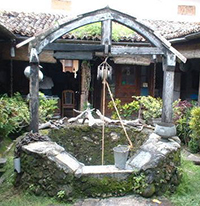

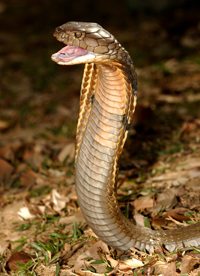


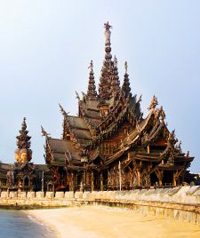
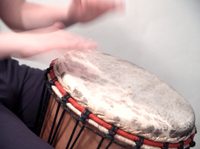
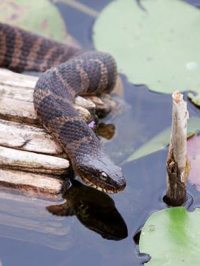
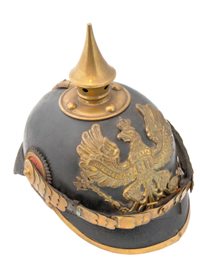
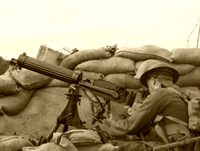

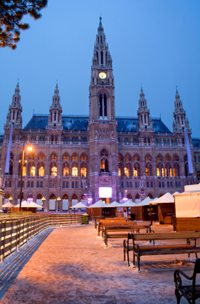


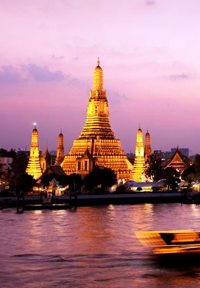




 How Derived:
How Derived: 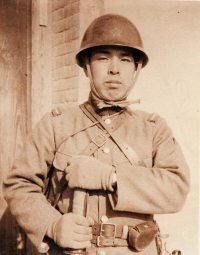 Reincarnation & Planning Lifetimes: Daw has an Announcing Dream involving the Japanese Soldier as a Spirit Being
Reincarnation & Planning Lifetimes: Daw has an Announcing Dream involving the Japanese Soldier as a Spirit Being A Child’s Past Life Memories: Ma says She misses Japan and her Family
A Child’s Past Life Memories: Ma says She misses Japan and her Family The US War Plane that Killed Ma in a Past Lifetime was a P-38 Lightning
The US War Plane that Killed Ma in a Past Lifetime was a P-38 Lightning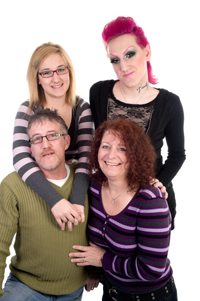 Other reincarnation cases which demonstrate gender identity issues due to change of sex include:
Other reincarnation cases which demonstrate gender identity issues due to change of sex include:

